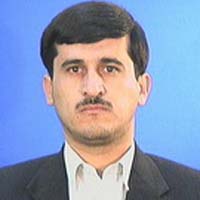Comparative Evaluation of Numerical Model and Artificial Neural Network for Quantity and Quality Simulation of Najafabad Aquifer
The aim of this study was to investigate the efficiency of the neural network model in quantitative and qualitative modeling of groundwater resources. For this purpose, the groundwater of the Najafabad aquifer located in Gavkhoni basin at the central plateau of Iran, was modeled using MODFLOW and MT3DMS modules of GMS v. 10 software. After calibrating and validating the model for a 11 years time period, the ranges of hydraulic conductivity, specific yield and longitudinal dispersivity coefficient were found to be 0.5-16 (m day-1), 0.023-0.113 and 7.5-18.2 (m), respectively. Then the study area divided into two sub-regions and the ANN model was designed for each of the sub-regions. Afterwards, the optimal parameters of the ANN models were determined using the 20-year dataset of water year and the genetic algorithm optimization model. Finally, calculated values relevant to the average level of groundwater and the mean concentration of TDS, which were acquired by the ANN model and the numerical model, were compared with the observed values from 2014 to 2016. Results showed that the neural network model is capable in simulating the quantitative and qualitative treatment of the groundwater system and can be used as a suitable alternative for the numerical model linking the management models.
-
Damage Detection of Truss Bridges Using Wavelet Transform of Rotation Signal
Hamid Ghafouri *, Amin Khajehdezfuly, Omid Saadat Poor
Civil Engineering Infrastructures Journal, Jun 2024 -
Special Issue of 22nd Iranian Conference on Hydraulics
Hamid Ghafouri *
Journal of Hydraulic Structures, Summer 2024



